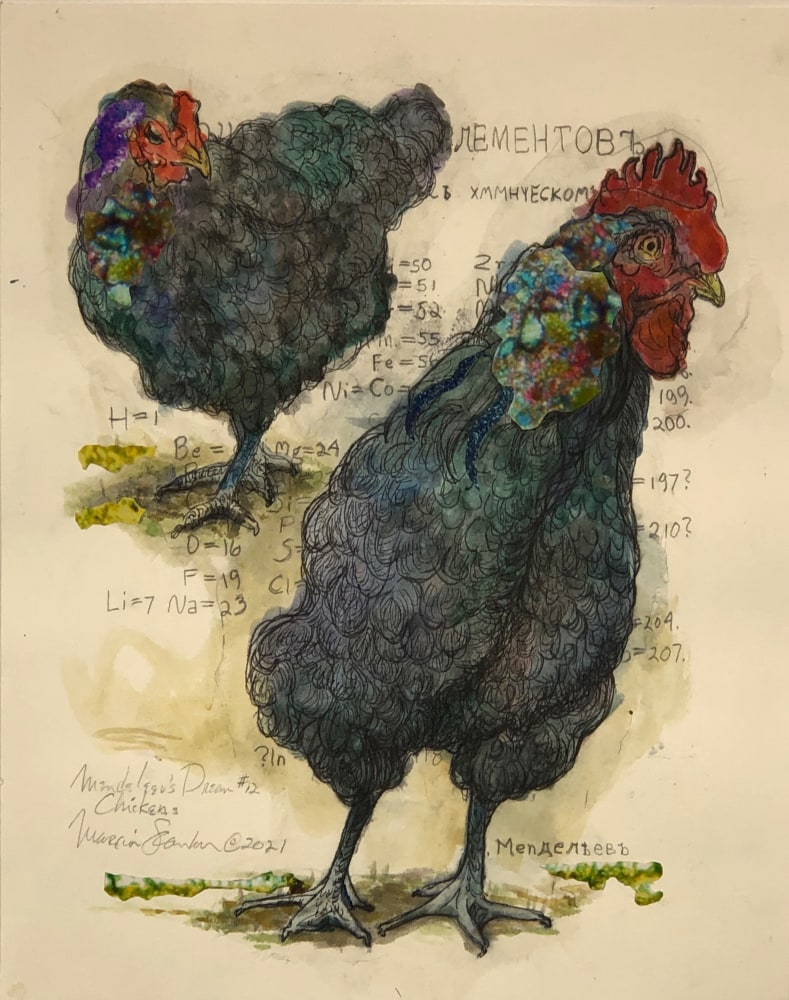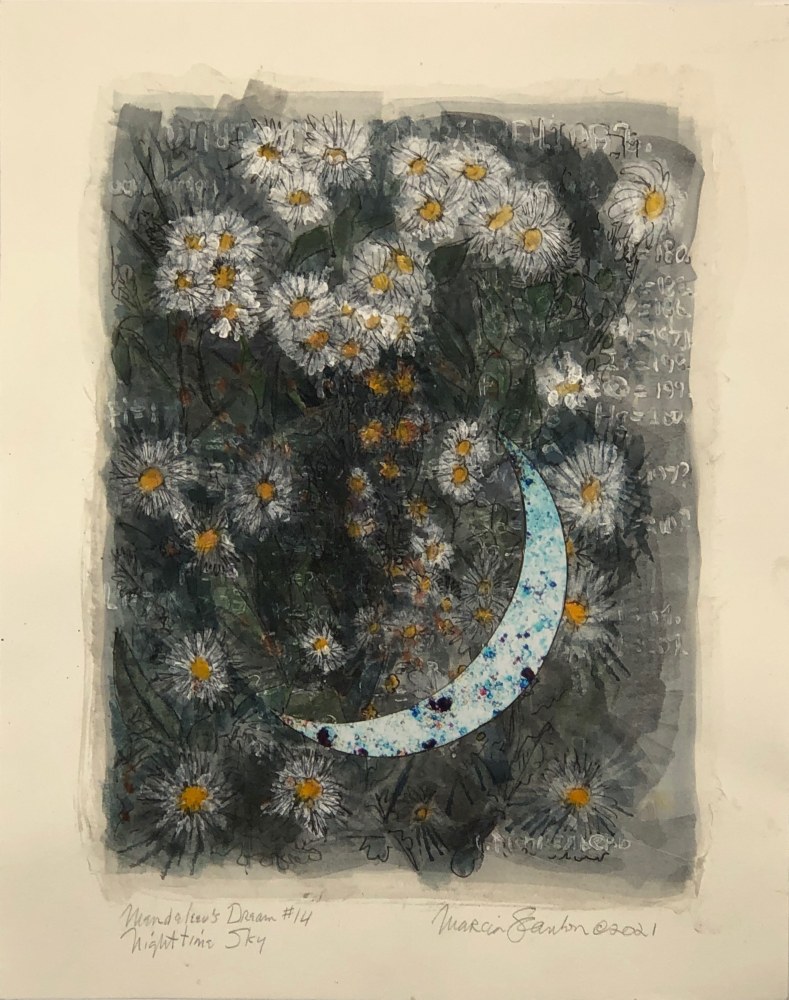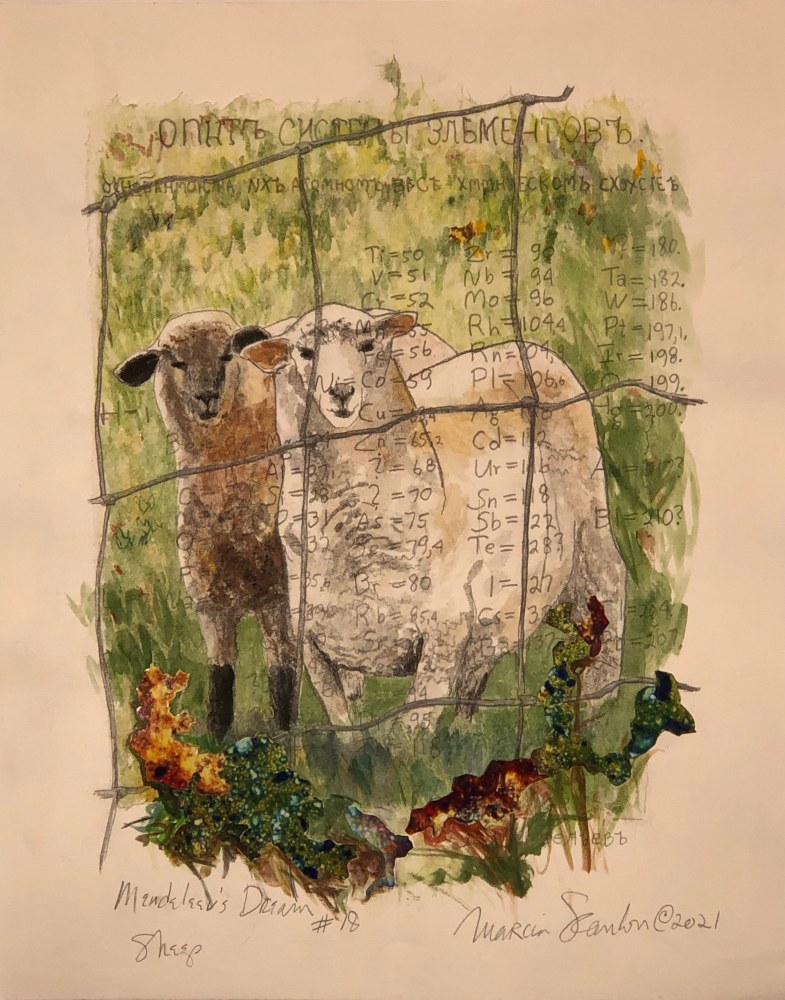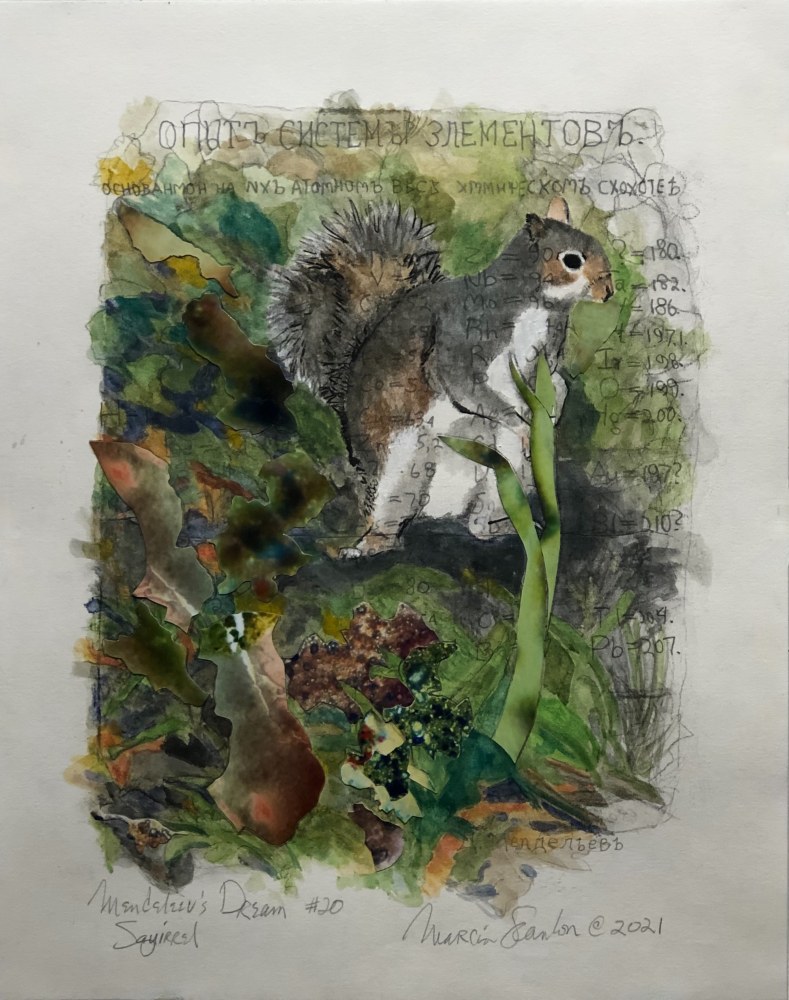
Drawn to nature and Greek mythology, Marcia Scanlon works with mixed media on paper to layer, connect, and reanimate ancient stories. Her works are well-rooted in literature, inspired, in part, by Homer’s Odyssey, Sappho’s poetry, Ovid’s Metamorphoses, as well as Baudelaire’s Convergences, and Joyce’s Ulysses. Her revisiting of these stories, coupled with her own lived experiences, creates a unique literary syncretism rooted in science, nature and the artist's materials themselves as her watercolor images of upstate flora and fauna are compellingly set against Mendeleev’s Periodic Table of Elements. Scanlon received her MFA in painting from the University of Minnesota and has had numerous international solo and group shows. Her work is in museum and corporate collections, such as The Art Institute of Chicago,Minneapolis Institute of Art, The Weisman Museum, San Diego Museum of Art, and the House of Arts and Letters, Larnaca, Cyprus to name a few. Currently, she works in studios in Soho and rural upstate New York.
Artist Statement on Mendeleev’s Dream Series:
This series starts with the pre-Socratic philosopher Anaxagoras in the 5th Century BCE. Anaxagoras described the world as a primary brew of undying elements, whose material variations were never caused by an absolute presence of one element, but rather by that element’s dominance over the others. “Each one is… most manifestly those things of which there are the most in it.” He introduced the concept of Nous (Cosmic Mind) as an ordering force that dislodged and separated out the variations from the original, nearly uniform brew. Anaxagoras’s concept of undying, omnipresent elements moves me deeply. What a genius and good guesser.
Next comes Mendeleev. I look for ways of connecting my regard for ancient Greek mythology and thought to our present day, so I was enchanted by Mendeleev’s dream, in which the vision of the periodic table of elements suddenly came to him. To be sure, he had been working furiously on the development of the table, but the resolution came in a dream, and this format, expanded, is still used by scientists.
To my mind, Anaxagoras’s formulation of unseen, unknown elements is made manifest in the Periodic Table. Now, I’m able to layer time with images: Anaxagoras, BCE; Mendeleev, 19th Century; and me, in the here and now. The original Periodic Table of Elements with Mendeleev’s signature gives me a matrix in which Anaxagoras’s concept of Nous frees me to link those valued special images from my own experience that would otherwise remain immersed in the universal brew. Photo-collaging images of worlds within worlds from my strong microscope allows me to integrate Anaxagoras’s ancient brew into my watercolor here-and-now variations, creating a moving circle of time within the stillness of the completed painting.





